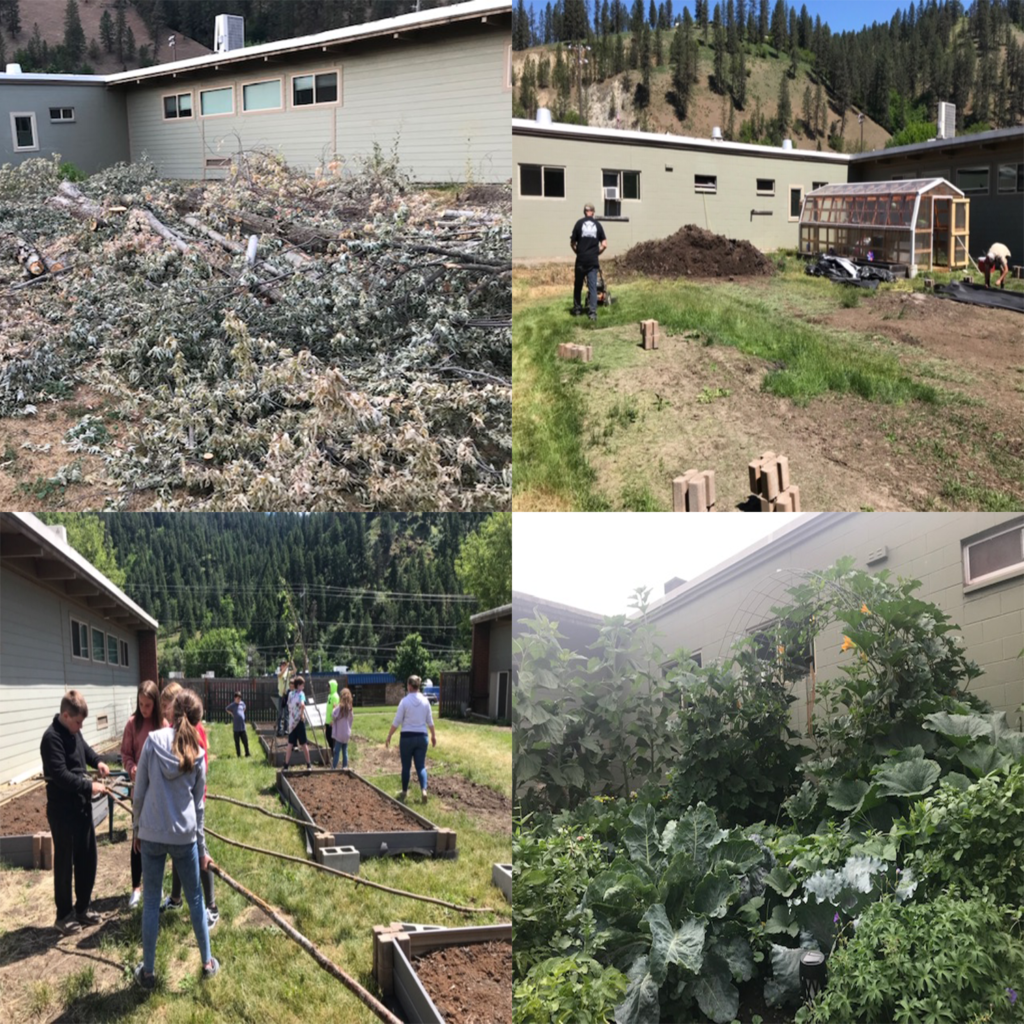
This Community Transformation Grant project will increase access to healthy foods in Orofino
The prognosis for the community garden at Orofino Elementary School didn’t look promising in 2021. The school’s campus had closed in 2020 due to the COVID-19 pandemic. Although school resumed in the fall of 2020, the campus was under restrictions that left the garden in a dormant state for more than a year.
The fortunes changed when the City of Orofino decided to invest in the garden, using funds from a Community Transformation Grant it received from the Blue Cross of Idaho Foundation for Health. The multiyear grant supports the city’s effort to increase access to healthy foods and physical activity for children.
A team of community leaders made access to healthy and affordable foods a priority for the grant. The team set a goal of creating space and opportunities to grow food, as well as provide education, information, and demonstration of healthy food.
“The Community Transformation Grant dollars have contributed to the success of this ongoing project,” said Dr. Michael Garrett, the superintendent of Joint School District #171, which includes Orofino Elementary.
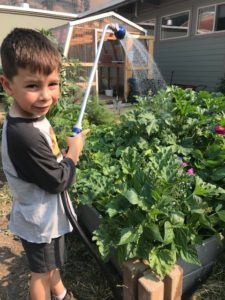 The transformation of the garden started in May with a significant community effort to move a large, previously unused greenhouse to the facility. New garden beds funded by the Community Transformation Grant were constructed to follow a detailed, thought-out plan for the space. A new gate helps keep deer and other animals away. The gardening work has been done by students as well as a small team of volunteers, led by Tami Wayt, who retired in 2020 after working in the school’s attendance office. Wayt’s contributions haven’t gone unnoticed.
The transformation of the garden started in May with a significant community effort to move a large, previously unused greenhouse to the facility. New garden beds funded by the Community Transformation Grant were constructed to follow a detailed, thought-out plan for the space. A new gate helps keep deer and other animals away. The gardening work has been done by students as well as a small team of volunteers, led by Tami Wayt, who retired in 2020 after working in the school’s attendance office. Wayt’s contributions haven’t gone unnoticed.
“Ms. Tami is an absolute rock star for our kids in the community in more ways than I can say — she has a heart of gold,” said Orofino City Administrator Ryan Smathers.
“Tami has made this garden a reality thanks to her dedication and vision,” Dr. Garrett said.
Crops were planted in 13 permanent beds, a large pumpkin patch bed and two movable beds made from galvanized metal. Green Things, a local nursery, donated two apple trees for the space. The area of the garden that is shaded has been transformed into a sensory corner that includes a bench, water feature and flowerpots designed by children. A local florist, Orofino Flower Shop, shared advise and donated the flowers to plant. There is a common area and a picnic spot, too. The latest improvement to the garden was having a watering system installed.
It hasn’t been easy. High temperatures, wildfires and COVID-19 limiting the number of volunteers has made it a challenge.
“This community came together and it’s an absolutely gorgeous place,” Wayt said. “I’m excited for the kids and everyone to see the fruits of their labor. It is absolutely amazing to me how it has flourished.”
An open house for the garden took place in August. Community members toured the facility and learned how it developed. Children were able to taste fresh produce sample and see their garden had grown since the end of the school year.
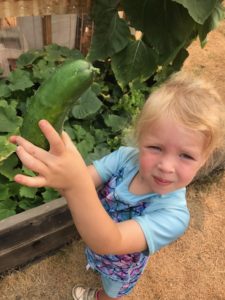
Here are some of the things planted in the community garden:
• Potatoes (three varieties)
• Tomatoes (five types)
• Mini pumpkins
• Summer squash
• Winter squash
• Green beans
• Rhubarb
• Herbs
• Blueberry bushes
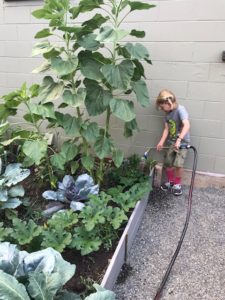
• Strawberries (two types)
• Beets
• Lettuce
• Garlic
• Onions
• Peas
• Corn
• Cucumbers
The garden is pollinator friendly, meaning no herbicides or pesticides are used.
“Kids got to see a praying mantis,” Wayt said. “We did a ladybug release, and the kindergartners did a caterpillar and butterfly project. We’ve been really successful in minimizing insect control by natural means. Look what happens when you get nature to work with you.”
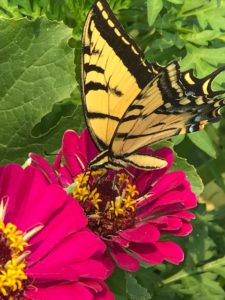
The produce is being used for the school’s summer food program and donated to the local food bank.
“The experience has not only given students and the community knowledge and practice of gardening but also is putting fresh food into our community and school,” Dr. Garrett said.
